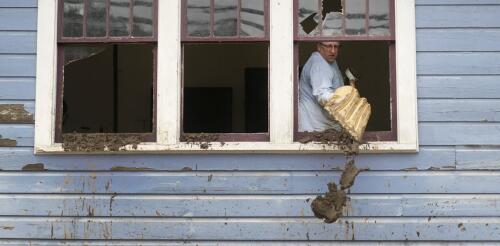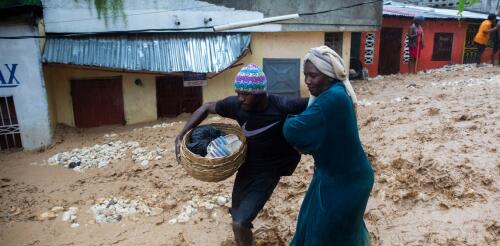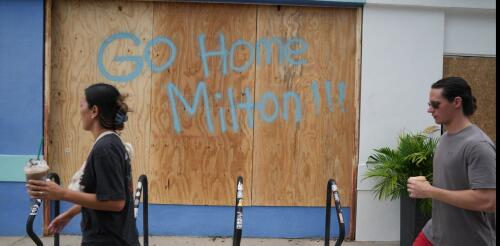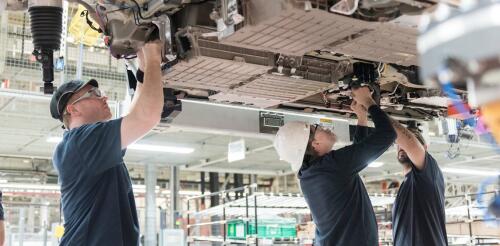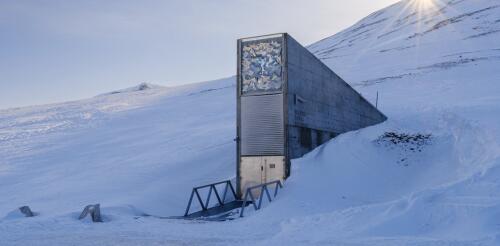Climate change
The trauma of natural disasters doesn’t end when the storm or wildfire is gone, or even when communities are being put back together and homes have been rebuilt. For many people, being displaced by a disaster has long-term consequences that often aren’t obvious or considered in disaster aid decisions. We study public policy and disaster response. To get a better understanding of the ongoing challenges disaster victims face – and how officials can respond more effectively – we analyzed U.S. Census Bureau surveys that ask people nationwide about their disaster displacement experiences, as well as their stress and anxiety. The results show how recovery from disasters such as hurricanes, wildfires, tornadoes and flooding involves more than rebuilding, and how already vulnerable groups are at the greatest risk of harm. Millions are displaced every year The Census Bureau’s Household Pulse Survey has been continually collecting data on people’s so...
Long before colonialism brought slavery to the Caribbean, the native islanders saw hurricanes and storms as part of the normal cycle of life. The Taino of the Greater Antilles and the Kalinago, or Caribs, of the Lesser Antilles developed systems that enabled them to live with storms and limit their exposure to damage. On the larger islands, such as Jamaica and Cuba, the Taino practiced crop selection with storms in mind, preferring to plant root crops such as cassava or yucca with high resistance to damage from hurricane and storm winds, as Stuart Schwartz describes in his 2016 book “Sea of Storms.” The Kalinago avoided building their settlements along the coast to limit storm surges and wind damage. The Calusa of southwest Florida used trees as windbreaks against storm winds. In fact, it was the Kalinago and Taino who first taught the Europeans – primarily the British, Dutch, French and Spanish – about hurricanes and storms. Even the word ‘hurri...
As TVs across Florida broadcast the all-too-familiar images of a powerful hurricane headed for the coast in early October 2024, people whose homes had been damaged less than two weeks earlier by Hurricane Helene watched anxiously. Hurricane Milton was rapidly intensifying into a dangerous storm, fueled by the Gulf of Mexico’s record-breaking temperatures. Many residents scrambled to evacuate, clogging roads away from the region. Officials urged those near the coast who ignored evacuation warnings to scrawl their names on their arms with indelible ink so their corpses could be identified. The two hurricanes were among the most destructive in recent memory. They are also stark reminders of the increasingly extreme weather events that scientists have long warned would be the consequence of human-driven climate change. Still, many people deny that climate change is a worsening threat, or that it exists at all. As its impacts grow more visible and destructive, how is this pos...
The United States is in the midst of the biggest boom in clean energy manufacturing investments in history, spurred by laws like the bipartisan Infrastructure Investment and Jobs Act and the Inflation Reduction Act. These laws have leveraged billions of dollars in government support to drive private sector investments in clean energy supply chains across the country. For several years, one of us, Jay Turner, and his students at Wellesley College have been tracking clean energy investments in the U.S. and sharing the data at The Big Green Machine website. That research shows that companies have announced 225 projects, totaling US$127 billion in investment, and more than 131,000 new jobs since the Inflation Reduction Act became law in 2022. You may have seen news stories that said these projects are at risk of failure or significant delays. In August 2024, the Financial Times reported that 40% of more than 100 projects it evaluated were delayed. These included battery manufacturi...
Two-thirds of the world’s food comes today from just nine plants: sugar cane, maize (corn), rice, wheat, potatoes, soybeans, oil-palm fruit, sugar beet and cassava. In the past, farmers grew tens of thousands of crop varieties around the world. This biodiversity protected agriculture from crop losses caused by plant diseases and climate change. Today, seed banks around the world are doing much of the work of saving crop varieties that could be essential resources under future growing conditions. The Svalbard Global Seed Vault in Norway supports them all. It is the world’s most famous backup site for seeds that are more precious than data. Tens of thousands of new seeds from around the world arrived at the seed vault on Svalbard, a Norwegian archipelago in the Arctic Ocean, in mid-October 2024. This was one of the largest deposits in the vault’s 16-year history. And on Oct. 31, crop scientists Cary Fowler and Geoffrey Hawtin, who played key roles in creating t...
